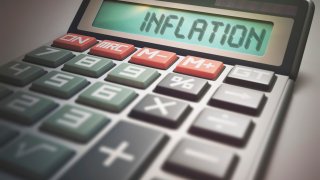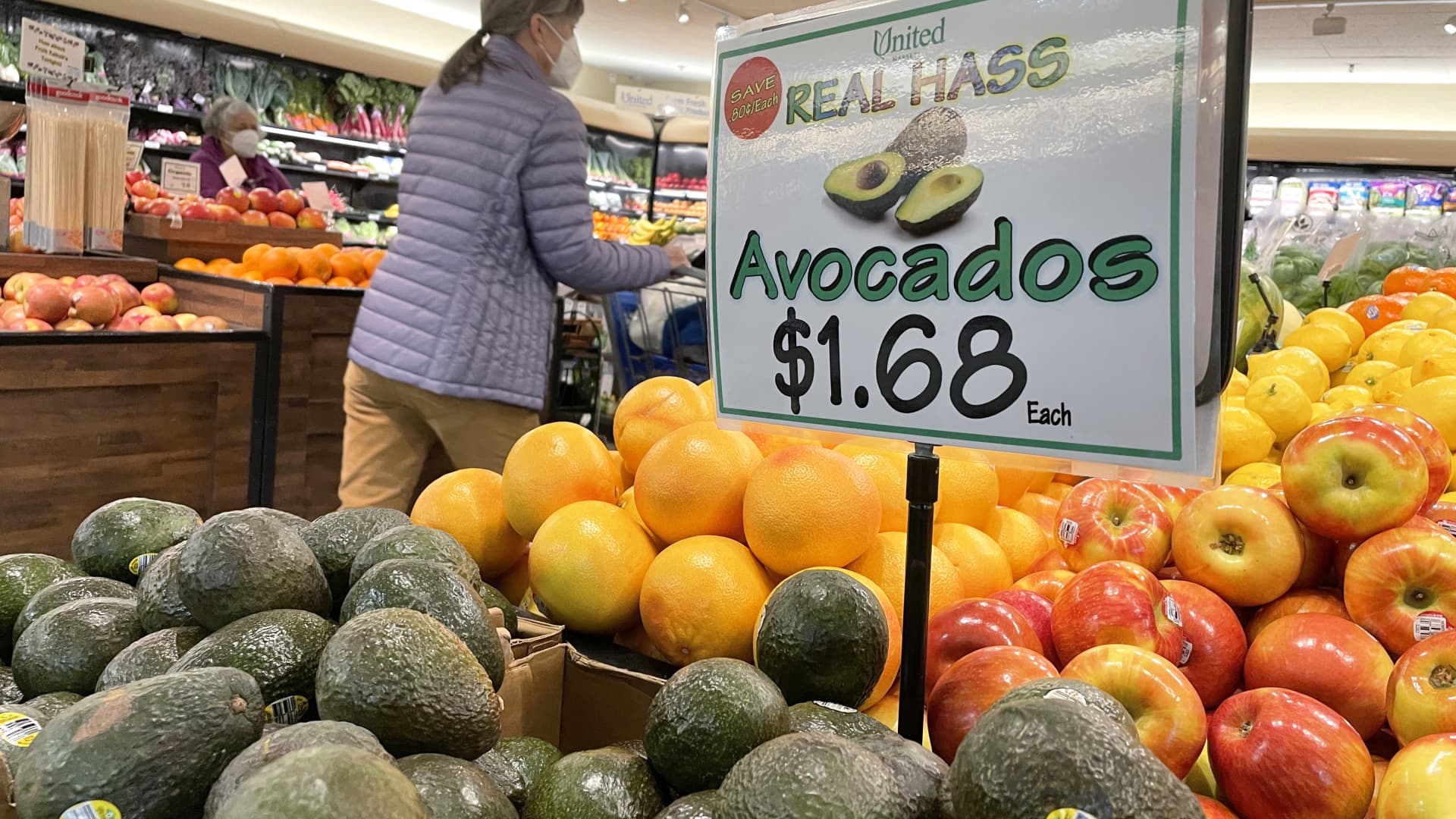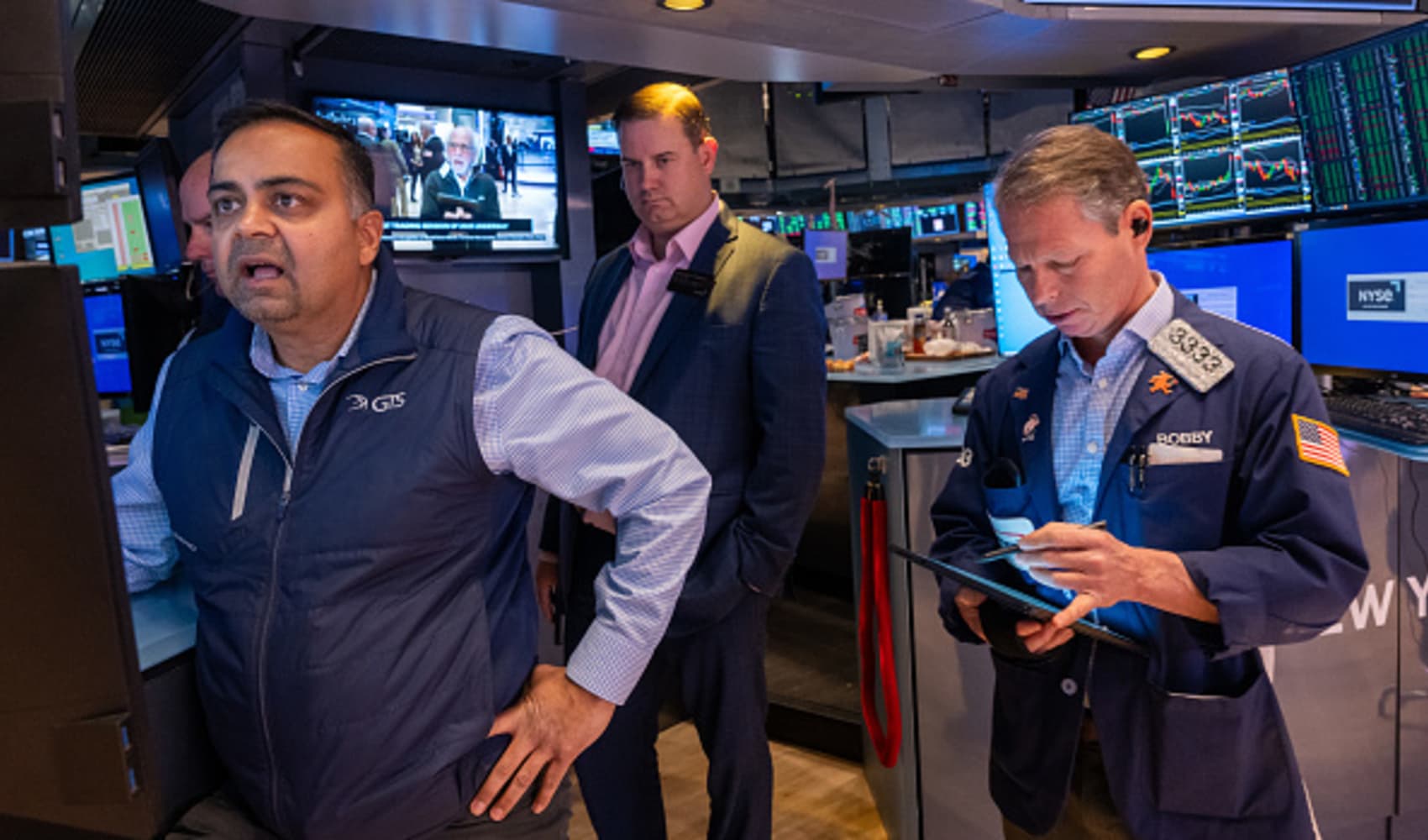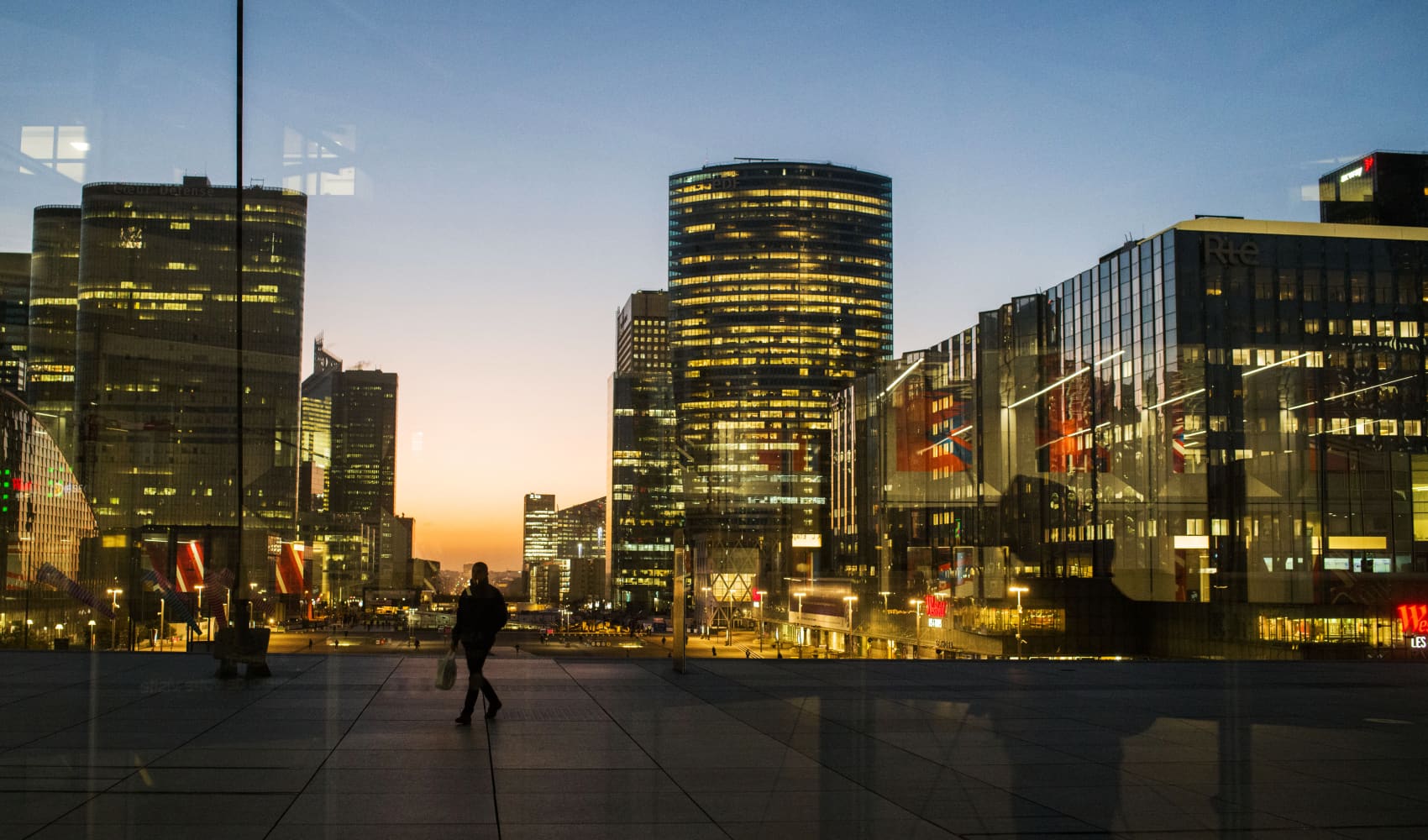

The Federal Reserve is set to hike interest rates this year for the first time since 2018 to address the worst inflation in 40 years spurred by the coronavirus pandemic.
Consumers already hit with higher prices might be wondering how it will help cool off rising costs.
In January, the consumer price index surged 7.5% on the year, more than economists expected and the fastest gain since February 1982. It also marked the fourth month in a row of record price increases.
We've got the news you need to know to start your day. Sign up for the First & 4Most morning newsletter — delivered to your inbox daily. >Sign up here.
More from Invest in You:
If you are quitting a job, here are some options for health insurance
Here are the top jobs in the U.S. — and how to land them
This company just decided to give employees a 4-day week permanently
"This is something really hard for the typical consumer to understand, seeing these fast price raises that are so unfamiliar to large parts of our population who haven't seen inflation rates like this before," said Tara Sinclair, a senior fellow at the Indeed Hiring Lab. "And then trying to figure out the Fed's complicated role in all of this is very confusing."
Here's what you need to know.
Money Report
The Fed's mandate
The Federal Reserve has a few main goals it focuses on in the economy: to promote maximum employment, keep prices stable and have moderate long-term interest rates.
Generally, the central bank aims to keep inflation around 2% annually, a benchmark that it lagged before the pandemic but now must address.
The Fed's main tool it can use to battle inflation is interest rates. It does so by setting the short-term borrowing rate for commercial banks, and then those banks pass it along to consumers and businesses, said Yiming Ma, an assistant finance professor at Columbia University Business School.
That rate influences everything from interest on credit cards to mortgages and car loans, making borrowing more expensive. On the flip side, it also boosts rates on high-yield savings accounts.
Higher rates and the economy
But how do higher interest rates reel in inflation? By slowing down the economy.
"The Fed uses interest rates as either a gas pedal or a brake on the economy when needed," said Greg McBride, chief financial analyst at Bankrate. "With inflation running high, they can raise interest rates and use that to pump the brakes on the economy in an effort to get inflation under control."
Basically, the Fed aims to make borrowing more expensive so that consumers and businesses hold off on making any investments, thereby cooling off demand and bringing prices back in check.
There could also be a secondary effect of alleviating supply chain issues, one of the main reasons that prices are spiking right now, said McBride. Still, the Fed can't directly influence or solve supply chain problems, he said.
"As long as the supply chain is an issue, we're likely to be contending with outside wage gains," which drive inflation, he said.
What could go wrong
The main worry for economists is that the Fed raises interest rates too quickly and dampens demand too much, slowing down the economic recovery.
This could lead to a higher unemployment rate if businesses stop hiring or even lay off workers to stay afloat. If the Fed really overshoots rate hikes, it could even push the economy back into a recession, halting and reversing the progress it has made so far.
Treating inflation in the economy is like treating cancer with chemotherapy, said Sinclair.
"You have to kill parts of the economy to slow things down," she said. "It's not a pleasant treatment."
Of course, it will take some time for any action the Fed makes to impact the economy and curb inflation. That's why the Federal Open Market Committee carefully watches economic data to decide how much and how frequently to raise rates.
Things could get worse before improving
The Fed has signaled that it will likely raise interest rates in March. How much that first hike will be, and what will follow it, is still unclear.
Markets are pricing in a 50 basis point, or 0.5%, rate increase in March, but have not reached any consensus on further rises.
St. Louis Fed President James Bullard on Monday said he thinks the Fed should push up interest rates quickly.
"I do think we need to front-load more of our planned removal of accommodation than we would have previously," Bullard told CNBC's Steve Liesman during a "Squawk Box" interview. "We've been surprised to the upside on inflation. This is a lot of inflation."
Last week, he said in an interview with Bloomberg News that he thinks the Fed should raise rates by as much as 1 full percentage point by July. Other regional bank leaders have expressed the desire to increase rates beginning in March, but none are as hawkish as Bullard.
When the Fed eventually does raise interest rates, it's also likely that people will see the negative aspects of those increases before any improvement on inflation, said Sinclair.
Basically, that means consumers may have to pay more to borrow money and still see inflated prices at the gas pump and grocery store at first. This is particularly harmful for low-income workers, who have seen wages go up recently but not keep pace with inflation.
Of course, the goal is for the Fed to raise rates gradually so that the economy slows just enough to bring down prices without boosting unemployment too much.
"They have to carefully walk that tightrope," said Sinclair.
SIGN UP: Money 101 is an 8-week learning course to financial freedom, delivered weekly to your inbox. For the Spanish version Dinero 101, click here.
CHECK OUT: The 'old convention' for saving in retirement won't work anymore, expert says: Here's how to shift your strategy with Acorns+CNBC
Disclosure: NBCUniversal and Comcast Ventures are investors in Acorns.






